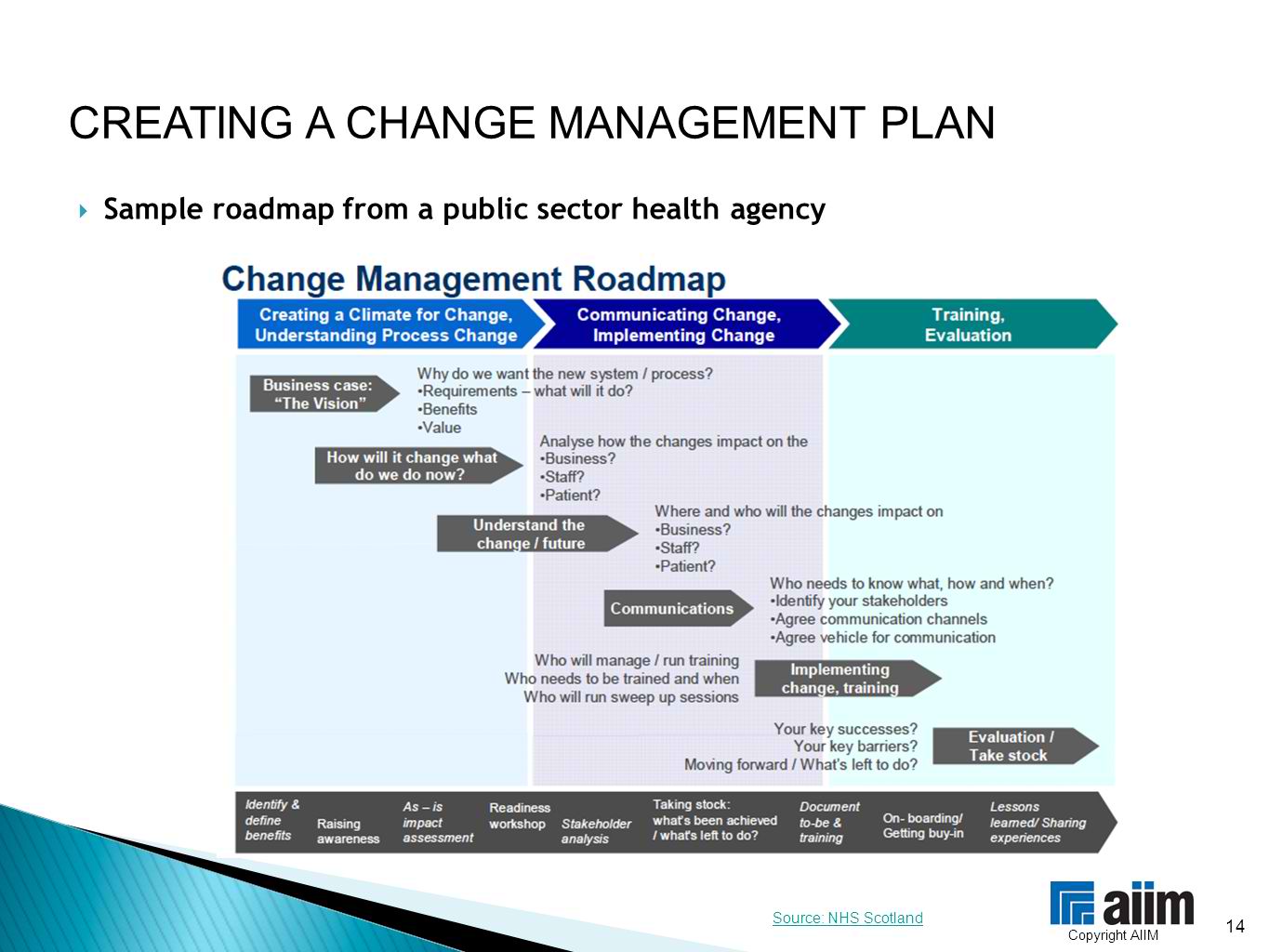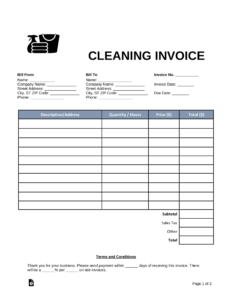Change is an inevitable part of any organization’s growth and development. Whether it’s implementing new technologies, restructuring processes, or adapting to market trends, change is necessary to stay competitive in today’s fast-paced business environment. However, managing change effectively is often easier said than done. Without a well-structured change management plan, organizations can face resistance, confusion, and even failure. In this article, we will explore a comprehensive change management plan example that can serve as a guide for organizations looking to navigate the complexities of change.
1. Introduction to Change Management
Change management is a structured approach to transitioning individuals, teams, and organizations from a current state to a desired future state. It involves understanding the need for change, planning its implementation, and managing the transition process. A change management plan provides a roadmap for effectively managing change and minimizing its negative impacts.
2. The Need for Change
Before diving into the details of a change management plan, it’s crucial to assess the need for change. This could be driven by various factors such as:
- Technological advancements
- Market trends and competition
- Organizational growth or restructuring
- Regulatory or compliance requirements
By understanding the reasons behind the change, organizations can effectively communicate the need to stakeholders and gain their support.
3. Creating a Change Management Team
One of the first steps in developing a change management plan is to assemble a dedicated change management team. This team should include individuals with diverse skills and expertise, such as project managers, HR professionals, and communication specialists. The team will be responsible for driving the change process, engaging stakeholders, and ensuring smooth implementation.
4. Assessing the Impact of Change
Change can have far-reaching impacts on various aspects of an organization, including processes, people, and systems. Conducting a thorough impact assessment helps identify potential risks and challenges associated with the change. This assessment should include:
- Evaluating the impact on existing processes and workflows
- Assessing the skills and capabilities required for the change
- Analyzing the effect on organizational culture and employee morale
- Identifying any potential resistance or barriers to change
By understanding the potential impacts, organizations can develop strategies to mitigate risks and address challenges proactively.
5. Defining Clear Objectives and Goals
A change management plan should outline clear objectives and goals that align with the organization’s overall strategy. These objectives should be specific, measurable, achievable, relevant, and time-bound (SMART). For example, if the change involves implementing a new customer relationship management (CRM) system, the objectives could include improving customer satisfaction by 20% within six months and increasing sales by 15% within a year.
6. Developing a Communication Strategy
Effective communication is crucial for successful change management. A well-defined communication strategy ensures that key messages are delivered to the right stakeholders at the right time. The strategy should include:
- Identifying the target audience for each communication
- Selecting appropriate communication channels, such as email, intranet, or town hall meetings
- Creating compelling messages that address the WIIFM (What’s In It For Me?) factor for stakeholders
- Establishing a feedback mechanism to address concerns and questions
Regular and transparent communication helps build trust, manage expectations, and reduce resistance to change.
7. Building Stakeholder Engagement
Engaging stakeholders throughout the change process is essential for gaining their support and commitment. Stakeholders can include employees, customers, suppliers, and even the broader community. Organizations should consider:
- Identifying key stakeholders and their level of influence
- Developing tailored engagement strategies for different stakeholder groups
- Providing opportunities for stakeholders to participate in decision-making processes
- Recognizing and rewarding stakeholders’ contributions to the change
By involving stakeholders from the beginning, organizations can harness their knowledge and expertise, making the change process more effective.
8. Developing a Training and Development Plan
Change often requires employees to learn new skills or adopt new behaviors. A comprehensive training and development plan ensures that employees have the necessary knowledge and capabilities to embrace the change. The plan should include:
- Identifying the specific training needs for each stakeholder group
- Designing training programs that are interactive and engaging
- Providing ongoing support and resources for continuous learning
- Evaluating the effectiveness of the training programs and making necessary adjustments
Investing in training and development shows employees that the organization is committed to their success and helps them navigate the change with confidence.
9. Managing Resistance to Change
Change often triggers resistance, as people naturally feel comfortable with the status quo. However, ignoring or dismissing resistance can hinder the change process. Organizations should anticipate resistance and develop strategies to address it, such as:
- Identifying the root causes of resistance
- Engaging with resistant individuals and addressing their concerns
- Providing clear and compelling reasons for the change
- Involving change champions who can influence others positively
By acknowledging and addressing resistance, organizations can create an environment where change is embraced rather than feared.
10. Implementing and Monitoring the Change
Once the change management plan is in place, it’s time to implement the change. This involves executing the strategies outlined in the plan, tracking progress, and making necessary adjustments along the way. Regular monitoring and evaluation help ensure that the change is on track and achieving the desired outcomes.
11. Evaluating the Change Management Process
After the change has been implemented, it’s crucial to evaluate the change management process itself. This evaluation helps identify areas of improvement and lessons learned for future changes. Key areas to evaluate include:
- Effectiveness of communication strategies
- Level of stakeholder engagement and satisfaction
- Success in achieving the defined objectives and goals
- Lessons learned for future change initiatives
By continuously improving the change management process, organizations can enhance their change capabilities and increase their chances of success.
Conclusion
A well-structured change management plan is a critical component of successfully managing organizational change. By following the example outlined in this article, organizations can navigate the complexities of change and increase their chances of achieving the desired outcomes. From assessing the need for change to evaluating the change management process, each step plays a crucial role in ensuring a smooth transition. Remember, effective change management is not just about implementing new processes or technologies; it’s about engaging people and building a culture that embraces change.
FAQs After The Conclusion
1. What is the role of a change management team?
A change management team is responsible for driving the change process, engaging stakeholders, and ensuring smooth implementation. They play a crucial role in planning, executing, and monitoring the change management plan.
2. How can organizations address resistance to change?
Organizations can address resistance to change by identifying the root causes of resistance, engaging with resistant individuals, providing clear reasons for the change, and involving change champions who can influence others positively.
3. Why is communication important in change management?
Effective communication is crucial in change management as it helps build trust, manage expectations, and reduce resistance to change. Clear and transparent communication ensures that key messages are delivered to the right stakeholders at the right time.
4. How can organizations measure the success of change management?
Organizations can measure the success of change management by evaluating the effectiveness of communication strategies, the level of stakeholder engagement and satisfaction, the success in achieving defined objectives and goals, and capturing lessons learned for future change initiatives.
5. What is the importance of training and development in change management?
Training and development are vital in change management as they equip employees with the necessary skills and capabilities to embrace the change. Investing in training shows employees that the organization is committed to their success and helps them navigate the change with confidence.
Summary
Managing change effectively is crucial for organizations to stay competitive in today’s business environment. A well-structured change management plan provides a roadmap for successfully navigating change and minimizing its negative impacts. From assessing the need for change to evaluating the change management process, each step plays a crucial role in ensuring a smooth transition. By following the example outlined in this article, organizations can increase their chances of achieving the desired outcomes and build a culture that embraces change.





